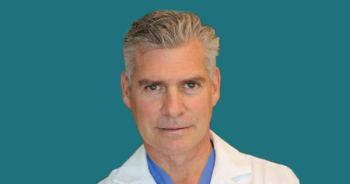
Haydar Frangoul, MD, on Insurance and Fertility Concerns After Sickle Cell Gene Therapy
The Medical Director of Pediatric Hematology/Oncology at Sarah Cannon Research Institute discussed unmet needs that remain after gene therapy approval for SCD.
“Individuals undergoing bone marrow transplantation or any type of transplant that can increase the risk of infertility have very limited access to fertility preservation. And some third party payers do not cover fertility preservation prior to chemotherapy. So patients with sickle cell disease are going to require to undergo high dose chemotherapy that can result in infertility. So, I personally think it is important to continue to advocate that fertility preservation should be offered to every individual undergoing chemotherapy.”
Exagamglogene autotemcel (exa-cel; Vertex Pharma, CRISPR Therapeutics) yielded early and sustained increases in Hb and HbF leading to elimination of vaso-occlusive crises in 95% of patients treated in the phase 3 CLIMB SCD-121 trial (NCT03745287), which has met its primary and key secondary endpoints. The therapy was recently approved under the name Casgevy for treating sickle cell disease (SCD) and has since also been approved for the treatment of transfusion-dependent b-thalassemia.
Updated data from the trial were presented by Haydar Frangoul, MD, Medical Director of Pediatric Hematology/Oncology at Sarah Cannon Research Institute and Pediatric Transplant and Cellular Therapy Program at TriStar Centennial, at
CGTLive spoke with Frangoul to learn more about the unmet needs that remain for the SCD population after the gene therapy approvals. He stressed that people have to keep advocating for better insurance coverage as well as for coverage of fertility preservation.
REFERENCE
Frangoul H, Locatelli F, Sharma A, et al. Exagamglogene autotemcel for severe sickle cell disease. Presented at: ASH 2023 Annual Meeting & Exposition. December 9-12; San Diego, CA. Abstract #1052
Newsletter
Stay at the forefront of cutting-edge science with CGT—your direct line to expert insights, breakthrough data, and real-time coverage of the latest advancements in cell and gene therapy.











































